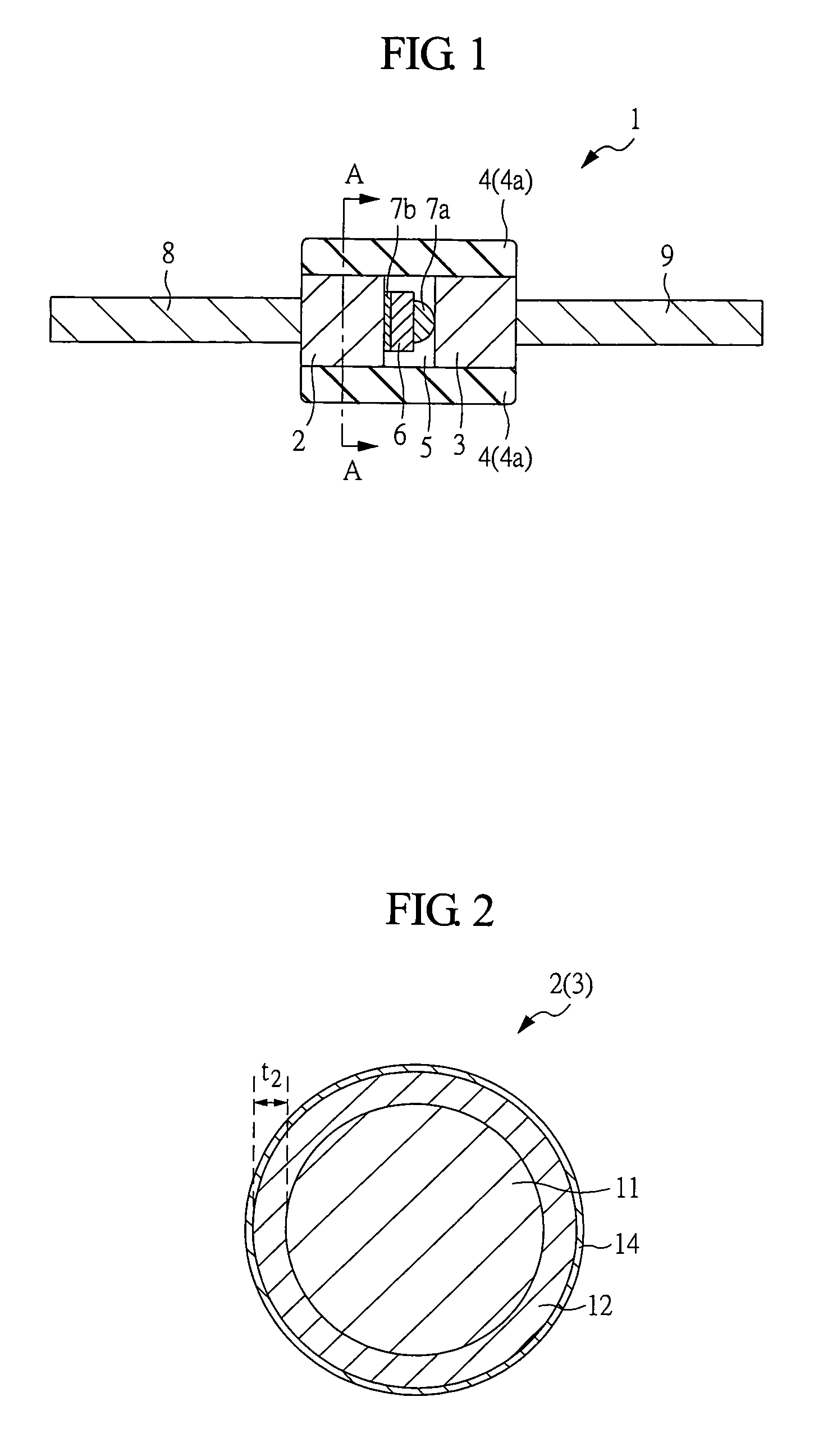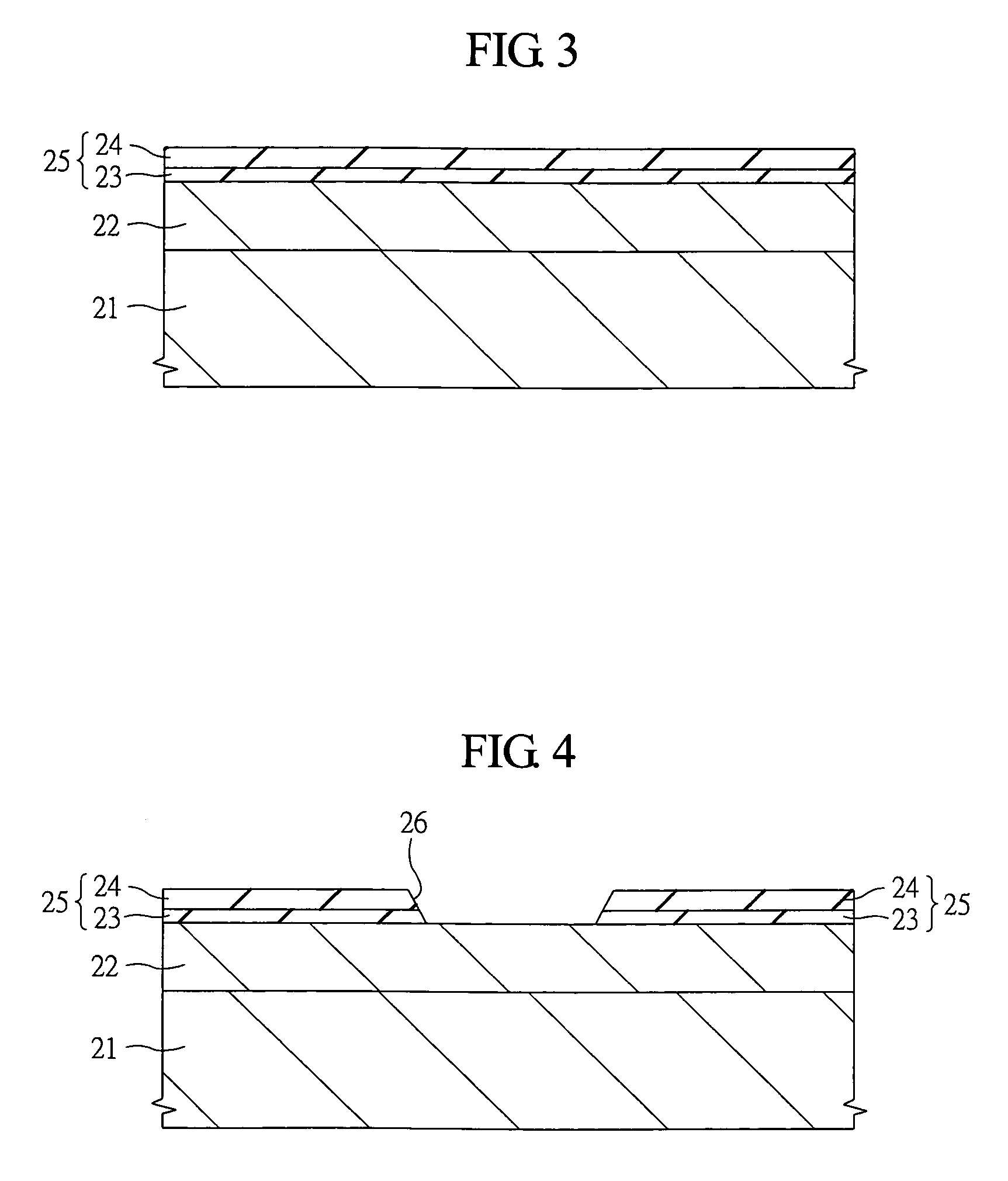Semiconductor device
- Summary
- Abstract
- Description
- Claims
- Application Information
AI Technical Summary
Benefits of technology
Problems solved by technology
Method used
Image
Examples
embodiment 1
[0040]A semiconductor device according to this embodiment will be described below with reference to the drawings. FIG. 1 is a sectional view showing the structure of a semiconductor device according to an embodiment of the present invention.
[0041]A semiconductor device 1 shown in FIG. 1 is a glass-sealed type semiconductor device, for example a glass-sealed type diode. As shown in FIG. 1, the semiconductor device 1 includes electrodes constituted by Dumet wires, i.e., Dumet electrodes 2 and 3, a glass sealing member (glass tube or glass sleeve) 4, and a semiconductor element 6 (semiconductor chip) airtightly sealed (enclosed or airproof sealed) in a cavity 5 constituted by the Dumet electrodes 2 and 3 and the glass sealing member 4.
[0042]The glass sealing member 4 has a tubular (cylindrical) shape. The Dumet electrode 2 and the Dumet electrode 3 are arranged to face each other through the semiconductor element 6. The Dumet electrodes 2 and 3 and the semiconductor element 6 interpose...
second embodiment
[0087]In the first embodiment, a Schottky barrier diode is used as the semiconductor element 6 glass-sealed in the semiconductor device 1. In the second embodiment, a diode element except for a Schottky barrier diode, e.g., a semiconductor element (semiconductor chip) constituted by a diode element using a PN junction is used in place of the semiconductor element 6.
[0088]FIGS. 15 to 18 are main sectional views of steps in manufacturing a semiconductor element (semiconductor chip) 6a used in the semiconductor device according to the embodiment.
[0089]As shown in FIG. 15, a semiconductor substrate semiconductor wafer) 51 comprised of n+-type silicon in which an impurity (for example, arsenic (As) or phosphor (P)) having an n-type conductivity is doped at a high concentration is prepared. An epitaxial layer (epitaxial silicon layer) 52 having an n−-type conductivity is formed on the semiconductor substrate 51 by using a vapor-phase growth (epitaxial growth). An impurity (for example, ar...
third embodiment
[0101]In the first and second embodiments, diodes are used as the semiconductor elements 6 glass-sealed in the semiconductor device 1. In this embodiment, a semiconductor element (semiconductor chip) except for the diode is used in place of the semiconductor element 6.
[0102]FIG. 20 is a sectional view of a semiconductor device 1baccording to the embodiment, and corresponds to FIG. 1.
[0103]As shown in FIG. 20, the semiconductor device 1b of the embodiment is a glass-sealed type semiconductor device, and can function as a non-contact type electronic tag having, e.g., a microwave receiving antenna. In the semiconductor device 1b, a semiconductor element (semiconductor chip) 6b is airtightly sealed (enclosed) in a cavity 5 constituted by Dumet electrodes 2 and 3 and a glass sealing member (glass tube or glass sleeve) 4. External leads 8 and 9 are connected to the Dumet electrodes 2 and 3, respectively. The semiconductor device 1b has almost the same configuration as that of the semicond...
PUM
 Login to View More
Login to View More Abstract
Description
Claims
Application Information
 Login to View More
Login to View More - R&D
- Intellectual Property
- Life Sciences
- Materials
- Tech Scout
- Unparalleled Data Quality
- Higher Quality Content
- 60% Fewer Hallucinations
Browse by: Latest US Patents, China's latest patents, Technical Efficacy Thesaurus, Application Domain, Technology Topic, Popular Technical Reports.
© 2025 PatSnap. All rights reserved.Legal|Privacy policy|Modern Slavery Act Transparency Statement|Sitemap|About US| Contact US: help@patsnap.com



